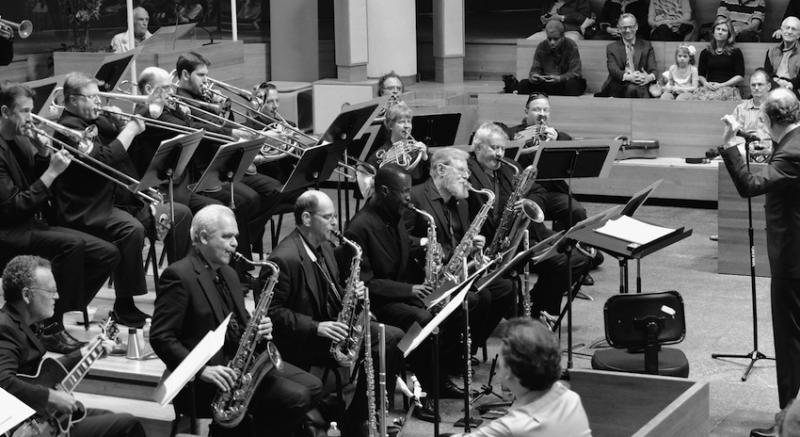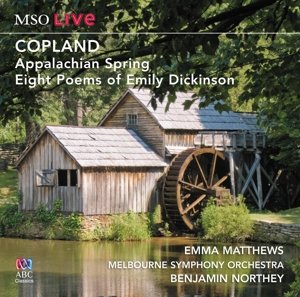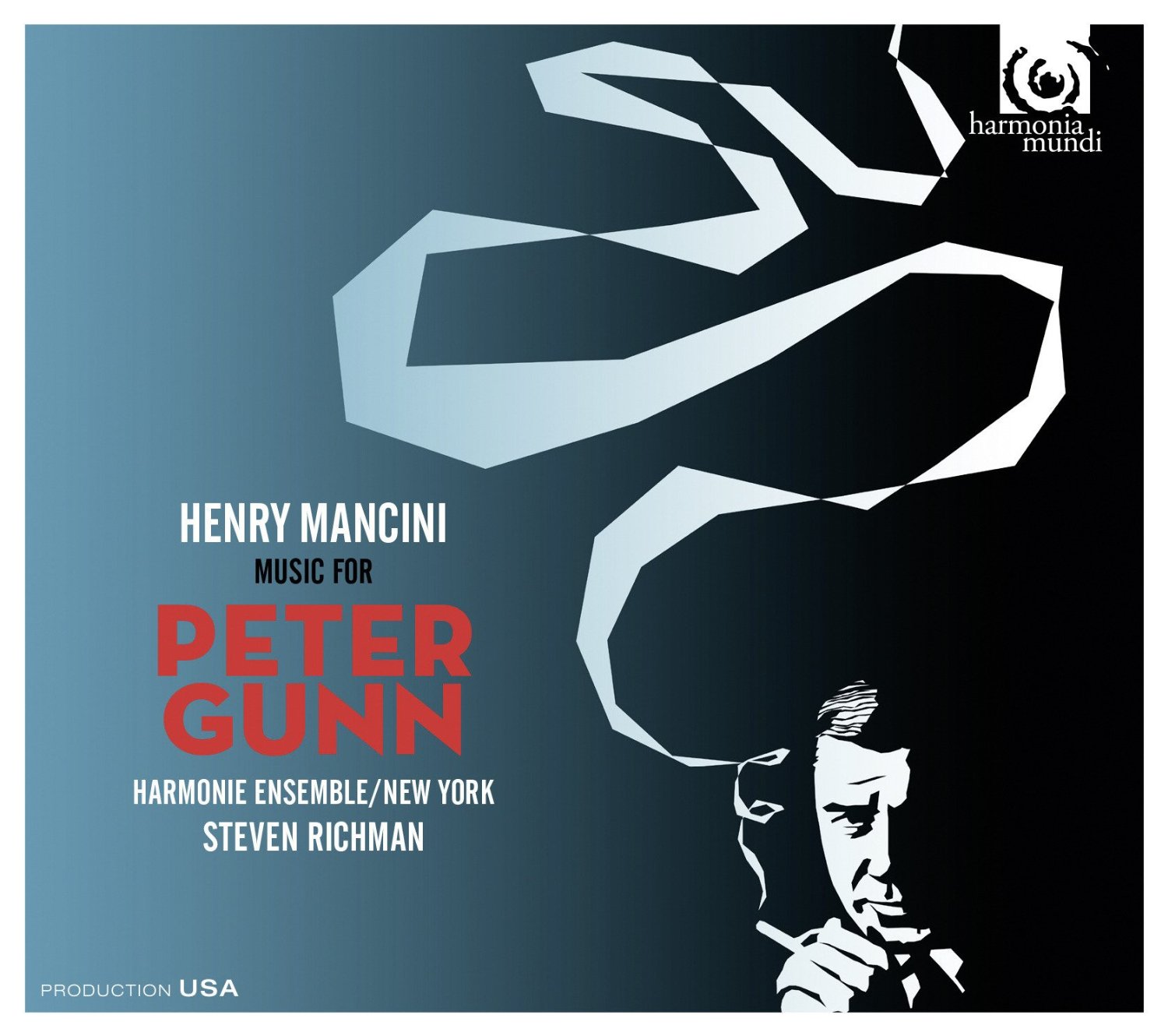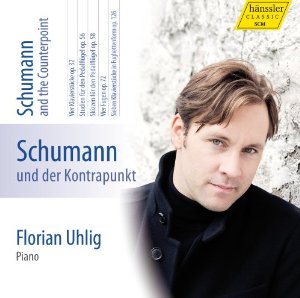Classical CDs Weekly: Copland, Henry Mancini, Schumann | reviews, news & interviews
Classical CDs Weekly: Copland, Henry Mancini, Schumann
Classical CDs Weekly: Copland, Henry Mancini, Schumann
Well-known tunes from influential Americans and a German romantic in cerebral mood


If you or I were to sit at a piano keyboard and play, simultaneously, chords of E and A major, it would probably sound awful. Aaron Copland's Appalachian Spring gets away with it by spacing the chords out widely. Dissonance has rarely sounded so sweet. This euphonious ballet score (its title actually inspired by lines from a Hart Crane poem referring to a water spring, not a season) pulls off the rare trick of seeming superficially simple, folk-like, while remaining musically sophisticated. Copland's ever-changing metres make this a fiendish score to play, and this live performance from a reduced Melbourne Symphony Orchestra under Benjamin Northey is immaculate. I like Northey's hushed, still opening. Vibrato-free strings suggest a wheezy harmonium, and the exposed wind solos are nicely done. The Stravinskian Subito allegro section at the ballet's centre is impeccable, and the ensuing Shaker melody is played with cool simplicity. Copland's original 13-instrument scoring was dictated by the size of the original orchestra pit. It's a pity that Northey gives us the reduced ensemble suite minus the 6-7 minutes of music which Copland excised. Listen to the man himself conducting his own 1970s chamber recording and be dazzled at what's normally cut.
The disc opens with the less well-known Eight Poems of Emily Dickinson. First performed in 1950, they were orchestrated in 1958 and mark Copland's shift away from the crowd-pleasing works of the 1930s and 40s. The mood is more introspective and private. Copland senses Dickinson's isolation; there's a strangeness, a darkness at play in these songs. "There a came a wind like a bugle" is magnificent, and "Sleep is supposed to be" builds to a terrifying, raw climax. There is superb, clear singing from Australian soprano Emma Matthews. An attractive, well-recorded disc, though short measure at only 55 minutes.
Henry Mancini's score for the TV series Peter Gunn was a game changer; incidental music so memorable that it came to dominate each episode. NBC's show began transmission in 1958 and lasted for three lengthy seasons. Composer John Williams played piano in Mancini's band, and his own first attempts at film scoring followed Mancini's jazzy template. Everyone's heard Peter Gunn's title theme, even if they can't name it. It begins slyly with clicking cymbals before raucous brass and whooping horns enter. All played over an insistent, iconic bass line on bass guitar and low piano (provided on the original recording by Williams). It's stunning. As John Caps's sleeve note rightly says, “TV scoring had never been so raucous, so arresting or so right.” An anthology like this handsome new one allows one to appreciate just how fertile Mancini's talent was. There's plenty of pleasure to be had in spotting the musical links between different tracks. The bass line is recycled inventively, and Mancini's brass frequently allude to the main theme.
Steven Richman's Harmonie Ensemble do Mancini's music proud. Vibraphone player Christos Rafalides is an unsung hero here, and pianist Lincoln Mayorga gets the cocktail bar ambience exactly right. Marvel at "Spook"'s lolloping 12/8 rhythms, underpinned by squelching brass pedals. "Dreamsville", the standout ballad, is beautifully done. Play this loudly while driving and it'll lend a noirish tinge to the weekly supermarket shop. The sleeve art is great. Hopefully you'll then be inspired to track down Mancini's own vintage Peter Gunn LPs. Richman is sleek, polished and urbane; Mancini is brasher and more raucous. Both are essential purchases.
Florian Uhlig's thematically organised Schumann series reaches its seventh volume with a set highlighting the composer's debt to Bach. It contains some fascinating, rarely-heard music. Listen to some of the music on this 2-disc set blind and you might think you've encountered an unsung Baroque genius. After an emotional and physical slump in 1844, Robert and Clara Schumann devoted themselves to studying counterpoint for therapeutic reasons. Schumann referred to his "passion for fugues", and it's not difficult to imagine that the technical demands and constraints would have offered appealing distraction. The Op 72 Four Fugues were completed in 1845, though published four years later, the composer doubting the public's appetite for such cerebral music. Heard today, they're deeply rewarding marriages of technique and expression. Schumann subsequently experimented with a pedal piano, composing two sets of short pieces for the instrument. Uhlig's immaculately realised transcriptions for two-handed piano sound impressive, and they're performed without gimmickry.
The Op 56 studies (Six pieces in canonic form) are again a revelation – formal brilliance combined with tenderness. Four sketches for pedal piano are probing explorations of pianistic colour. After which it's a surprise to encounter the later, more severe Op 126 Seven piano pieces in fughetta form, again composed as possible respite from external events. They're marvellous, alternately sombre and skittish, played with characteristic lightness and intelligence by Uhlig. The earlier fugues and canons date from the early 1830s, after Schumann's self-doubt had prompted him to take composition lessons. These do sound in places like student exercises, though always brilliantly accomplished ones. Hearing a tightly-constructed fugue reach its conclusion can be one of life's minor pleasures, and these little jewels provide plenty of brain food. Better still are the four Op 32 piano pieces, the Gigue and Fughette fusing technique and soul. Detailed notes and good sound make this release self-recommending.
Explore topics
Share this article
The future of Arts Journalism
You can stop theartsdesk.com closing!
We urgently need financing to survive. Our fundraising drive has thus far raised £49,000 but we need to reach £100,000 or we will be forced to close. Please contribute here: https://gofund.me/c3f6033d
And if you can forward this information to anyone who might assist, we’d be grateful.

Subscribe to theartsdesk.com
Thank you for continuing to read our work on theartsdesk.com. For unlimited access to every article in its entirety, including our archive of more than 15,000 pieces, we're asking for £5 per month or £40 per year. We feel it's a very good deal, and hope you do too.
To take a subscription now simply click here.
And if you're looking for that extra gift for a friend or family member, why not treat them to a theartsdesk.com gift subscription?
more Classical music
 Scott, Irish Baroque Orchestra, Whelan, RIAM, Dublin review - towards a Mozart masterpiece
Characteristic joy and enlightenment from this team, but a valveless horn brings problems
Scott, Irish Baroque Orchestra, Whelan, RIAM, Dublin review - towards a Mozart masterpiece
Characteristic joy and enlightenment from this team, but a valveless horn brings problems
 Classical CDs: Voice flutes, flugelhorns and froth
Baroque sonatas, English orchestral music and an emotionally-charged vocal recital
Classical CDs: Voice flutes, flugelhorns and froth
Baroque sonatas, English orchestral music and an emotionally-charged vocal recital
 Kanneh-Mason, Britten Sinfonia, Shave, Milton Court - a grin and a big beaming smile
A pair of striking contemporary pieces alongside two old favourites
Kanneh-Mason, Britten Sinfonia, Shave, Milton Court - a grin and a big beaming smile
A pair of striking contemporary pieces alongside two old favourites
 theartsdesk at the New Ross Piano Festival - Finghin Collins’ musical rainbow
From revelatory Bach played with astounding maturity by a 22 year old to four-hand jazz
theartsdesk at the New Ross Piano Festival - Finghin Collins’ musical rainbow
From revelatory Bach played with astounding maturity by a 22 year old to four-hand jazz
 First Person: Manchester Camerata's Head of Artistic Planning Clara Marshall Cawley on questioning the status quo
Five days of free events with all sorts of audiences around Manchester starts tomorrow
First Person: Manchester Camerata's Head of Artistic Planning Clara Marshall Cawley on questioning the status quo
Five days of free events with all sorts of audiences around Manchester starts tomorrow
 Goldscheider, Brother Tree Sound, Kings Place review - music of hope from a young composer
Unusual combination of horn, strings and electronics makes for some intriguing listening
Goldscheider, Brother Tree Sound, Kings Place review - music of hope from a young composer
Unusual combination of horn, strings and electronics makes for some intriguing listening
 theartsdesk Q&A: composer Donghoon Shin on his new concerto for pianist Seong-Jin Cho
Classical music makes its debut at London's K-Music Festival
theartsdesk Q&A: composer Donghoon Shin on his new concerto for pianist Seong-Jin Cho
Classical music makes its debut at London's K-Music Festival
 Helleur-Simcock, Hallé, Wong, Bridgewater Hall, Manchester review - moving lyricism in Elgar’s concerto
Season opener brings lyrical beauty, crisp confidence and a proper Romantic wallow
Helleur-Simcock, Hallé, Wong, Bridgewater Hall, Manchester review - moving lyricism in Elgar’s concerto
Season opener brings lyrical beauty, crisp confidence and a proper Romantic wallow
 Kohout, Spence, Braun, Manchester Camerata, Huth, RNCM, Manchester review - joy, insight, imagination and unanimity
Celebration of the past with stars of the future at the Royal Northern College
Kohout, Spence, Braun, Manchester Camerata, Huth, RNCM, Manchester review - joy, insight, imagination and unanimity
Celebration of the past with stars of the future at the Royal Northern College
 Jansen, LSO, Pappano, Barbican review - profound and bracing emotional workouts
Great soloist, conductor and orchestra take Britten and Shostakovich to the edge
Jansen, LSO, Pappano, Barbican review - profound and bracing emotional workouts
Great soloist, conductor and orchestra take Britten and Shostakovich to the edge

Add comment